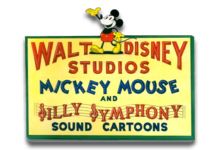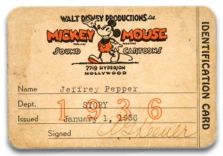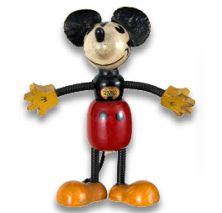Saturday at the Archives: In the Land of the Peeweegah
Editor's Note: Our recent exploration of Disney's Little Hiawatha reminded us of the classic Carl Barks comic The Land of the Pygmy Indians, which also owed inspiration to Longfellow's epic poem. We discussed both Barks' story and Don Rosa's sequel to it in this article from 2007.
In the Land of the Peeweegah
By Jeffrey Pepper
Originally published July 10, 2007
Gemstone Publishing has just released the first volume of a new comic book series that features the work of their two most notable and famous comic creators, the legendary Carl Barks, and contemporary Duck scribe Don Rosa. Rosa has always used Bark’s body of Donald Duck and Uncle Scrooge stories as the foundation and inspiration for his own efforts over the past twenty years, often penning direct sequels to many of the Duckman’s epic adventures. Each issue of the ongoing Barks-Rosa Collection will bring an original Barks endeavor and its subsequent Rosa sequel together in one publication.
The just-released first volume pairs Barks’ classic 1957 Uncle Scrooge adventure The Land of Pygmy Indians with Rosa’s 1990 The War of the Wendigo.
 While one does not normally associate America’s post-war years with eco-friendly attitudes and conservation-based movements, Carl Barks certainly and not-so-subtlety infused The Land of Pygmy Indians with environmentally-conscious sensibilities. The conflict between industrialization and conservation is encapsulated in Uncle Scrooge, who in the story’s opening panel, rages about Duckburg’s “smog and noise and shoving people,” and expresses his desire to relocate to an unspoiled land free of roads, cities, factories and people. Yet, just a few panels later after Scrooge has purchased a large tract of northern wilderness from Sidewalk Sam the Real Estate Man, Scrooge acknowledges to himself that he is the one responsible for the “chemical gases, smelter smoke and factory fumes” that permeate Duckburg. It touches on the same “we have met the enemy and it is us” supposition that fellow cartoonist and Disney alumnus Walt Kelly brought to his famous Pogo comic strip years later.
While one does not normally associate America’s post-war years with eco-friendly attitudes and conservation-based movements, Carl Barks certainly and not-so-subtlety infused The Land of Pygmy Indians with environmentally-conscious sensibilities. The conflict between industrialization and conservation is encapsulated in Uncle Scrooge, who in the story’s opening panel, rages about Duckburg’s “smog and noise and shoving people,” and expresses his desire to relocate to an unspoiled land free of roads, cities, factories and people. Yet, just a few panels later after Scrooge has purchased a large tract of northern wilderness from Sidewalk Sam the Real Estate Man, Scrooge acknowledges to himself that he is the one responsible for the “chemical gases, smelter smoke and factory fumes” that permeate Duckburg. It touches on the same “we have met the enemy and it is us” supposition that fellow cartoonist and Disney alumnus Walt Kelly brought to his famous Pogo comic strip years later. This theme continues as Scrooge, accompanied by Donald and the nephews, heads north to survey his newly acquired property. As the group marvels at sapphire blue lakes and beautiful natural vistas, Scrooge finds himself instinctively identifying the region’s untapped resources that are just begging for exploitation.
This theme continues as Scrooge, accompanied by Donald and the nephews, heads north to survey his newly acquired property. As the group marvels at sapphire blue lakes and beautiful natural vistas, Scrooge finds himself instinctively identifying the region’s untapped resources that are just begging for exploitation.
The Peeweegah Indians emerge from this wilderness and quite rightly question the motivations of the paleduck visitors. Scrooge, despite attempting to repress his crass commercialism, still insists that he is the land’s rightful owner. The Peeweegah chief disputes these claims in an eloquent oration spoken in rhythms inspired by Longfellow’s classic The Song of Hiawatha poem:
By whom was this token given?
By whose hand these written scratches?
Did the sun from high above you
Sell you all these lands and waters?
Did the winds that bend the pine trees?
Did the snows that fall in winter?
Did the rain shower or the lightning
Sign away these forests to you?
Me no believe that such a token
Would be honored by the fishes
By the creatures of the forest
By the birds we call our brothers
In the land of the Peeweegahs!
None could sign away these woodlands,
None could have the right or reason,
But the chiefs of all the brothers
In a powwow with the seasons!
Scrooge is forced to prove his not-so-sincere intentions by the standard trial by fire ritual, in this case besting the King Sturgeon, a giant villainous fish that terrorizes both the peaceful Peeweegahs and the local wildlife as well. Naturally it is Donald, the paleducks’ champion, who ultimately must challenge and bring about the sturgeon’s defeat.
It is no small irony that the sturgeon is vanquished using the very resources that Scrooge so desperately covets. The ever resourceful nephews concoct a pill comprised of the “oxide of strombolium” made of materials Scrooge has been lovingly sifting from the area’s soil. When Scrooge is later made ill and driven back to Duckburg by a drag on a peace pipe laced with the very same elements, that same irony is revisited again. In the tale’s final panels, Scrooge revels in Duckburg’s toxic pollution he initially sought so desperately to escape.

Don Rosa returned Scrooge, Donald and the nephews to the northern wilderness of Canada in The War of the Wendigo, and the environmental concerns of the late 20th century became the focal point of this story still set in Barks’ postwar duck universe. Rosa always made a point of keeping his stories grounded in a 1950s time frame, maintaining consistency with Barks original stories. When the nephews astutely identify “acid rain” at one point in the story, it bears the tone of a newly coined term rather than an established idiom. Let’s face it, when recognizing ecological issues, the Junior Woodchucks were literally decades ahead of their time.
 Traveling to Ontario to inspect his paper mills, Scrooge and the boys are drawn into the mystery of the Wendigo, legendary gremlins of the north woods. The Wendigo in fact turn out to be the Peeweegah, who with their animal brethren are sabotaging one of Scrooge’s main mills. The mill is spewing pollutants that are impacting the Peeweegah’s native lands, the same lands Scrooge had vowed to preserve and protect. After the Peeweegah kidnap Scrooge to hold him accountable for his perceived betrayal, the mill’s plant manager, Ravage DeFlora quickly sets in motion a plan to plunder the Great North’s natural resources and spread devastation.
Traveling to Ontario to inspect his paper mills, Scrooge and the boys are drawn into the mystery of the Wendigo, legendary gremlins of the north woods. The Wendigo in fact turn out to be the Peeweegah, who with their animal brethren are sabotaging one of Scrooge’s main mills. The mill is spewing pollutants that are impacting the Peeweegah’s native lands, the same lands Scrooge had vowed to preserve and protect. After the Peeweegah kidnap Scrooge to hold him accountable for his perceived betrayal, the mill’s plant manager, Ravage DeFlora quickly sets in motion a plan to plunder the Great North’s natural resources and spread devastation.
Though the resulting climax involves a large scale revolt on the part of Mother Nature’s normally passive creatures and the destruction of the paper mill, it is once again the Peeweegah chief who provides Scrooge with some much needed wisdom and perspective:
Oh, paleface duck of big wampum,
How you think you got your riches?
Did man put gold in the Yukon
For you to dig out with shovel?
Did man fill you mines with diamonds?
Did man fill your wells with oil?
Did man plant the ancient forests
That turned to coal for your digging?
Scrooge Mac-Duck, you owe your riches
To the Mother Nature spirit!
This day spirit has decided
To take back this tiny portion!
With lessons hopefully learned, Scrooge vows to “install pollution controls in all his factories” and “plant two trees for everyone he cuts.” But it is the words of a Junior Woodchuck in the story’s final panel that reflects a contemporary reality that extends beyond any comic book story:
“Do you think Unca Scrooge will ever learn to appreciate the non-financial profits?”
It is the same question that we in the 21st century must ask when confronting those inconvenient truths similar to the ones Scrooge McDuck encountered in the land of the Peeweegah.
Uncle Scrooge Adventures: The Barks/Rosa Collection Volume 1 is available to order from the popular online booksellers, as well as directly from Gemstone Publishing.





























































